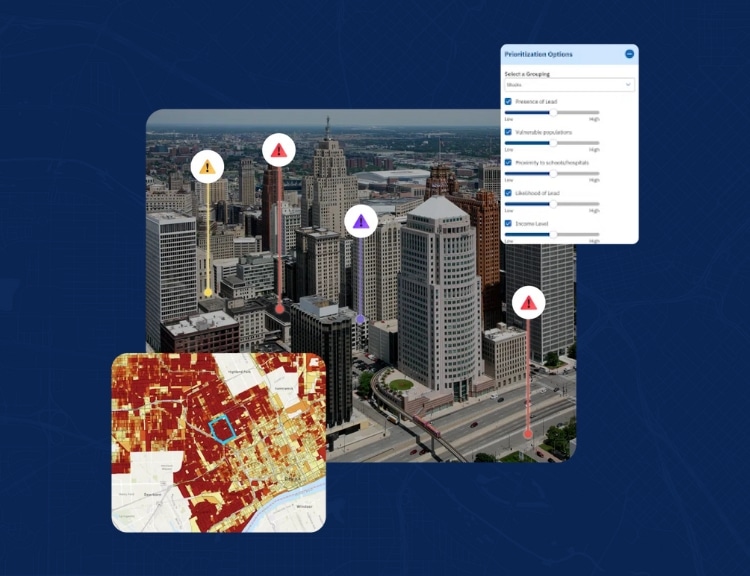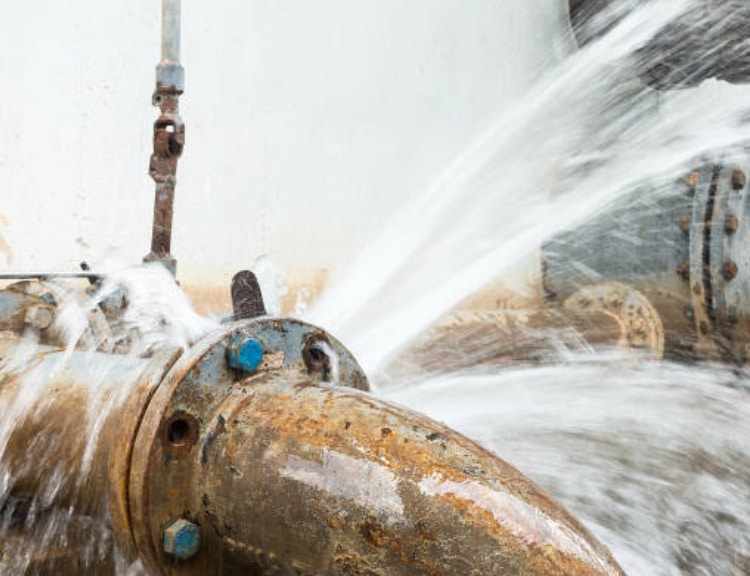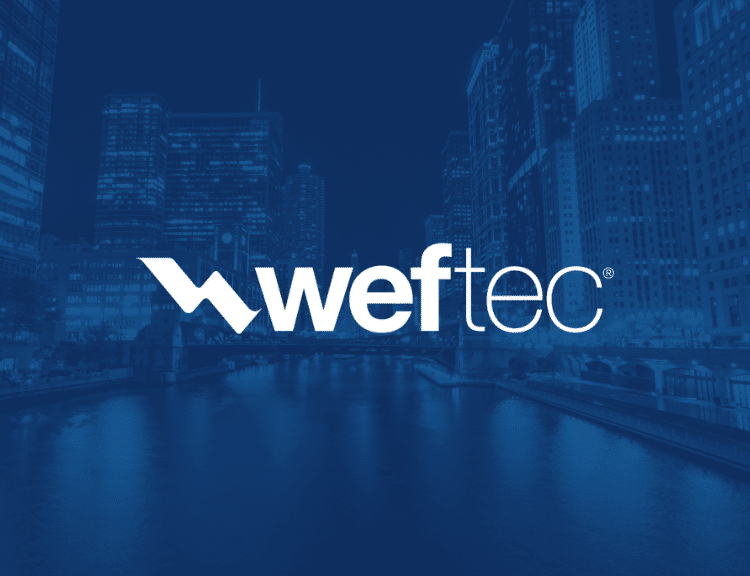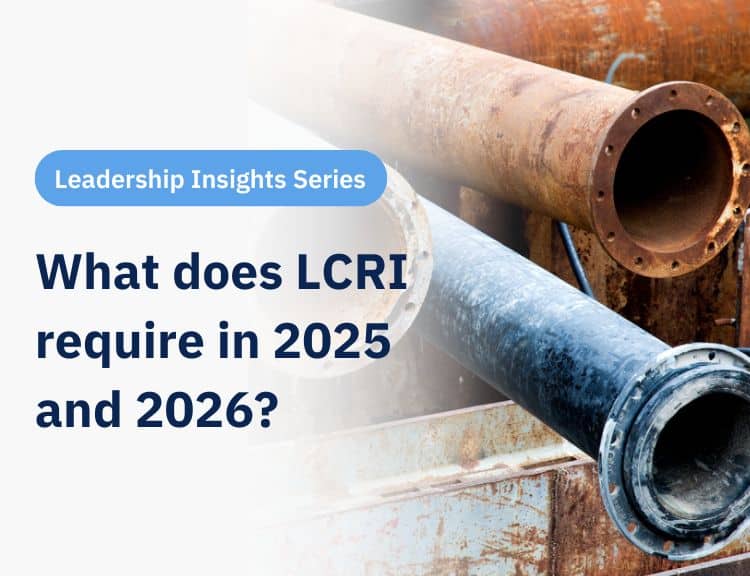BlueConduit is launching a new LSL Replacements product to help water systems and engineering firms prepare to replace their lead and GRR service lines and optimize LSL/GRR replacement programs.
A key feature of this product is replacement prioritization – users can easily, with just a few clicks in their existing Esri environment, use local data to prioritize which LSLs should be replaced first, second, and so on.
Let’s explore why data-driven replacement prioritization matters for LSL replacement and how BlueConduit’s prioritization functionality works!
Why is prioritization important for LSL replacement?
When it comes to lead service line replacement, order matters. The Lead and Copper Rule Improvements (LCRI) mandates that all lead service lines (LSLs) be replaced within a 10-year period. This presents an enormous challenge for water systems across the country, who are often working with limited budgets and resources for replacement.
Prioritizing replacements is critical to ensure that available resources are used effectively and efficiently to protect public health. This means identifying and addressing the areas of greatest need first, such as homes with children or vulnerable populations.
All LCRI-compliant LSL Replacement Plans, which must be developed and made publicly available by 2027, are required to include:
“[a] strategy to prioritize service line replacement based on factors including, but not limited to, known lead and galvanized requiring replacement service lines and community-specific factors, such as populations disproportionately impacted by lead and populations most sensitive to the effects of lead.” (LCRI, page 764)
Taking a data-driven approach is critical for LSL replacement prioritization
Effective LSL replacement prioritization requires a data-driven approach. This means going beyond simply knowing where LSLs are located and considering other relevant factors, such as presence of children, environmental justice index, school locations, and more.
Relevant data for LSL replacement prioritization should also look beyond public health impact and include factors like zoning, historical districts, water main risk, existing capital improvement projects, and more.
By considering all of these factors, water systems can develop a comprehensive and defensible prioritization strategy that ensures that the LSLs posing the greatest risk to public health are replaced first.
LSL replacement prioritization in BlueConduit’s LSL Replacements product
BlueConduit’s new LSL Replacements product enables simple, customizable prioritization in 3 steps.
First, users can select which datasets to include in their prioritization decisions, including LCRI-prioritized public health factors such as presence of children.
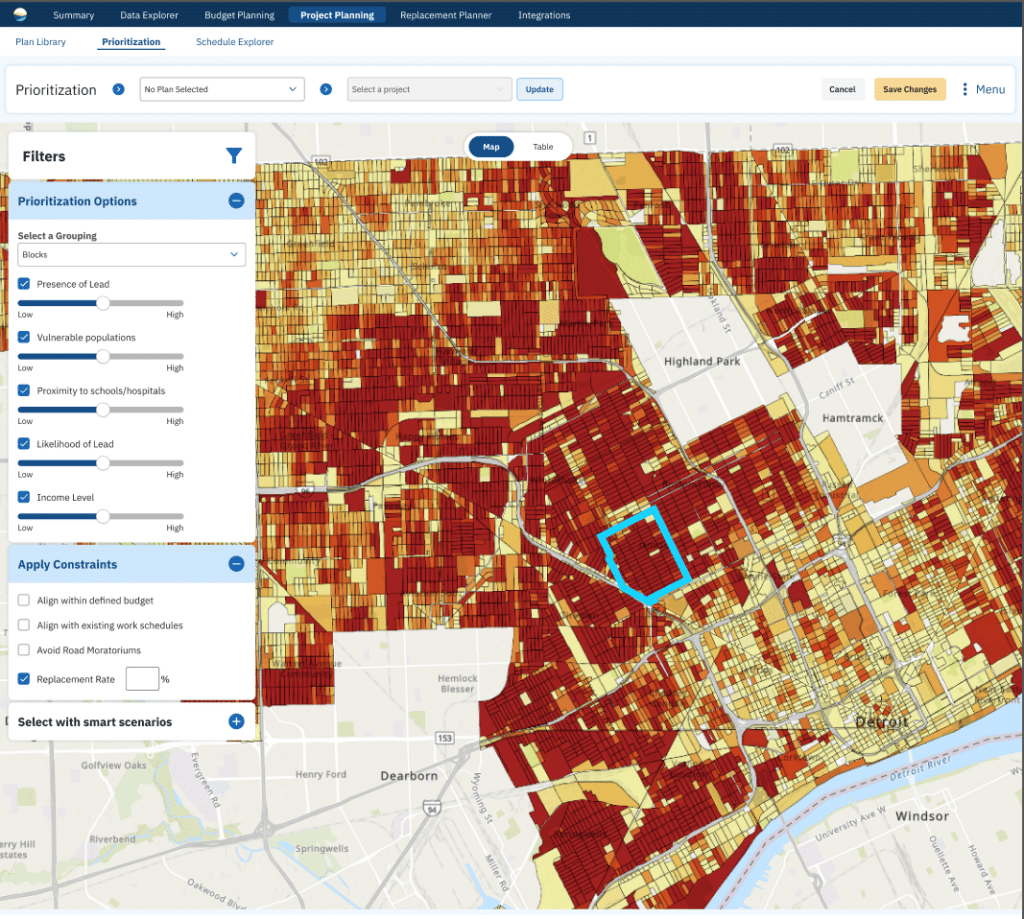
Then, users can easily weight different factors based on relative priority. For example, one water system might want to consider the presence of children and zoning most heavily when prioritizing for replacements, but another system might want to focus on public health factors solely and put the most priority on presence of children and environmental justice index (EJI) rankings. In the LSL Replacements tool, variable weights can be set and adjusted with a click of a button.
Finally, users can set their location preferences. Water systems will not replace LSLs in a priority order that requires them to jump all around the city. Selecting grouping such as street-level adjusts the prioritized list to reflect highest priority streets, rather than individual LSLs. This grouping is critical for the transition from prioritization to actual work order management and boots-on-the-ground replacement work.
Effective, data-driven LSL replacement prioritization is the backbone of a cost-effective, compliant LSL replacement program. BlueConduit’s new tool brings best practices in data-driven LSL replacement – developed through nearly 10 years of expert support for LSL replacement, combined with a customer-centric product design and feedback process – to simplify prioritization and let you focus on what’s most important: strategic decision-making, community engagement, and getting the lead out of the ground.
Ready to simplify your LSL replacement strategy and planning? Reach out to schedule a demo today!

